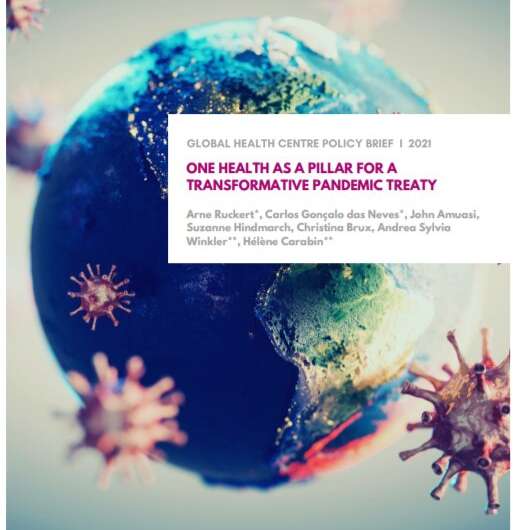
For three days this week, decision-makers of the World Health Organization gather for a special global assembly. With COVID-19 and its variants still very much in the news, the pandemic tops the agenda.
And one of the policy briefs up for discussion concerns a concept called “One Health,” which considers that the health of all living beings results from the interface between humans, animals and their environment.
Université de Montréal professor Hélène Carabin, an epidemiologist in the Faculty of Veterinary Medicine and the School of Public Health, is the co-lead author of the 30-page brief, titled “One Health as Pillar for a Transformative Pandemic Treaty.”
With six colleagues from the University of Ottawa, University of New Brunswick and universities in Germany, Norway and Ghana, Carabin argues for making animals and the environment part of the human equation in planning for future epidemics.
We asked her to explain.
First of all, in a nutshell, what is the concept of ‘One Health?’
In our brief, we largely base our definition on the view of One Health taken by the WHO, the Food and Agricultural Organization and the World Organization for Animal Health—what’s known at the United Nations as the Tripartite Collaboration. We adapted it to our own vision with these words: The OH approach recognizes that the health of all living organisms is interdependent, the product of connections among humans, animals, plants and the environment they share. The COVID-19 pandemic and other emerging infectious diseases, as well as well-established endemic zoonoses and the continuing threat of antimicrobial resistance, demonstrate the importance of the connections between the health of animals and humans, as they interact with and within their shared environment, and of the urgent need to address human, animal and environmental health challenges holistically.
The SARS CoV-2 virus is similar genetically to a virus circulating in bats and is thought to have initially spread through live animal markets in China. How could a One Health approach in planning for COVID-19 have prevented its spread?
The fact that infectious agents can infect several animal species, including the human species, is not new. We are very well aware now that this has happened on numerous occasions. For example, HIV is the result of multiple independent transmission events of SIV from primates to humans. The Spanish flu was most likely an avian influenza which was first passed on to pigs who infected humans. The One Health approach could have prevented SARS-CoV-2 from spreading in the first place by the presence of solid multi-species integrated surveillance systems. Integrating systems mean that people from different sectors communicate and work together to put in place a surveillance program where there’s a common sampling strategy and testing methods, data are shared and decisions are taken in light of information from all sectors. There are very few examples of such systems in the world. In the brief, we do mention the case of the Global Influenza Surveillance and Response System, which promotes the reporting by the animal health community of emerging influenza strains to the human sector. But what would be even better, but does not yet exist, would be surveillance systems whereby factors of emergence of infections in different species—including humans—could also be under surveillance and shared, which could help preventing spillover of infections between species.
This week’s work at the WHO is dedicated to developing a ‘pandemic treaty.’ How specifically would you like it to integrate the importance of the One Health approach?
It is important for people across the world to realize that everything is connected, especially when it comes to the transmission of infectious agents. In the past few decades, approximately 75 percent of all emerging infections have been shown to have an animal origin. And we are finding more and more that agents which we believed to be “only human,” were actually of animal origin. It is also important to realize that transmission does not always occur from animals to humans. At the moment, humans are infecting cats, dogs and deers with COVID-19; zoonotic infectious agents can transmit in any direction. In our brief, we argue that a permanent global One Health structure should be created to provide guidance on how the One Health approach should be put into operation with the support of a funding architecture specifically dedicated to it. We also recommend that clear One Health principles be developed for the prevention of and preparation for pandemics.
As a One Health professor at UdeM and the Tier 1 Canada Research Chair in Epidemiology and One Health, how do you see things developing in your field?
Source: Read Full Article
